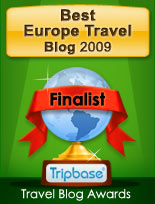 Brussels is known more for its waffles and beer (not necessariyly in that order) than for its arts and culture, but look closely and you'll see that the Capital of Europe is brimming with intellectual/creative/thought-provoking stimulation. Bruxellois and tourists alike have everything from a theater that specializes in Shakespeare to a comic strip museum at their disposal. If you're traveling to Brussels and you want to do something other than see what costume the Mannekin Pis is wearing, might I suggest a visit to the Musical Instruments Museum? Housed in a striking Art Nouveau building, and often refered to as the MIM, this interactive museum is the perfect first stop on your cultural tour of Brussels.
Brussels is known more for its waffles and beer (not necessariyly in that order) than for its arts and culture, but look closely and you'll see that the Capital of Europe is brimming with intellectual/creative/thought-provoking stimulation. Bruxellois and tourists alike have everything from a theater that specializes in Shakespeare to a comic strip museum at their disposal. If you're traveling to Brussels and you want to do something other than see what costume the Mannekin Pis is wearing, might I suggest a visit to the Musical Instruments Museum? Housed in a striking Art Nouveau building, and often refered to as the MIM, this interactive museum is the perfect first stop on your cultural tour of Brussels.When I visited the MIM with my friend The Cupcake Avenger back in September, we didn't really know what to expect. So, we were pleasantly surprised to discover that for the relatively small price of 5 euros we would receive entrance to the museum and a set of headphones that would allow us to listen to the instruments. With the MIM to ourselves (it was early Saturday morning in Europe, after all) we wandered through three different galleries while dancing to the beats, rhythms and songs that automatically began each time we would step in front of a display. The gallery that is dedicated to traditional instruments from around the world was my favorite, and I happily tapped my toes to the old French accordians in particular. In addition to increasing our knowledge of musical history, visiting the MIM gave us an opportunity to enjoy some good old fashioned fun.

After listening to everything from bagpipes to a mariachi band we headed up to the MIM's rooftop café for a couple of lattés and a gorgeous panoramic view of the city. I thought about everything we had just seen and heard and was reminded of the universality of music. The audio guides of most museums ask you to select your language: French? English? Spanish? Japanese? But not the MIM. When you put on those clunky headphones you listen to the same sounds as everyone else, no translation needed. It was a nice realization; one that made me feel all warm and fuzzy about the world around us. And hungry for some waffles and beer.

























